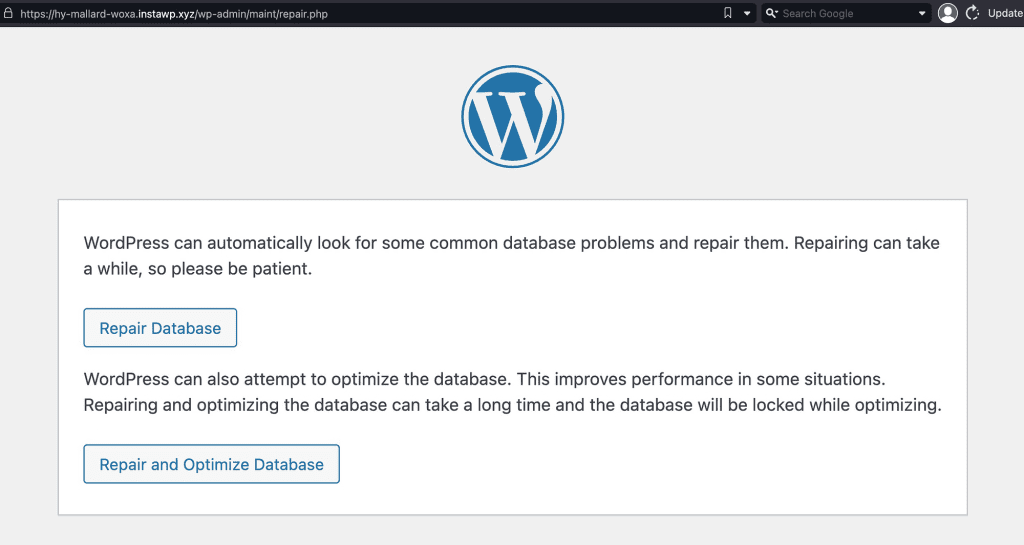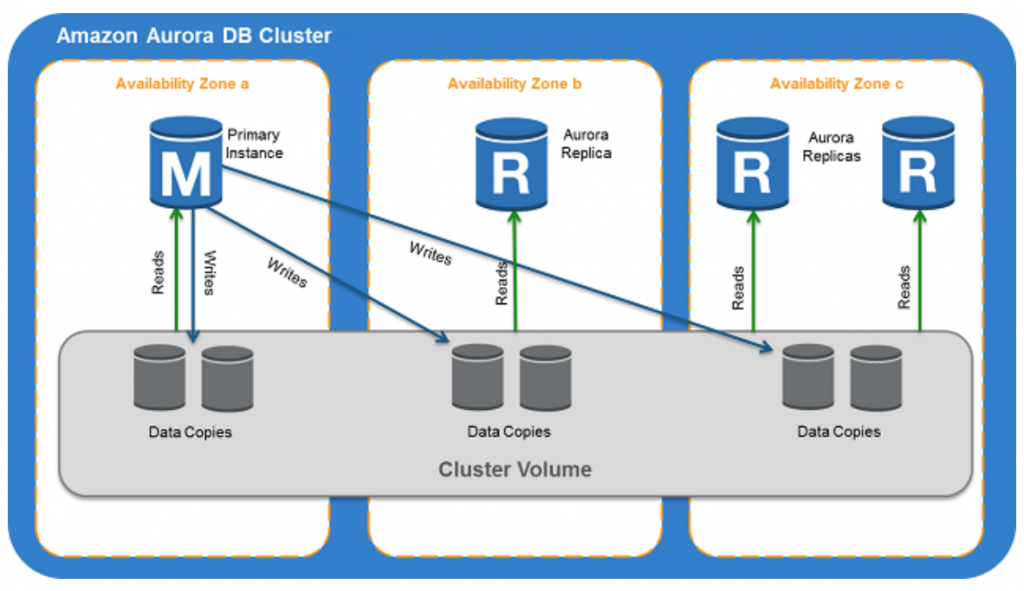Key Takeaways
- Optimize for Performance: WordPress Database Optimization is the key to unlocking faster loading times, enhancing user satisfaction, and positively impacting SEO rankings.
- Fine-tune the Orchestra: Understand the components, from tables to queries, and master practical techniques to fine-tune your website’s database, ensuring peak performance.
- Future-Proof Your Website: Stay ahead with emerging trends like AI integration, blockchain security, and serverless architectures, future-proofing your WordPress site for sustained excellence.
In the vast digital landscape, where milliseconds define user satisfaction, the efficiency of your WordPress website takes center stage. Beyond captivating themes and content lies a critical yet overlooked component – the database.
Join us in an exploration of “WordPress Database Optimization” to comprehend not just its definition, but why it stands as the linchpin for a website’s success.

The Pulsating Heartbeat: Why WordPress Database Optimization Matters
Envision your website as a bustling metropolis, with each content piece, user interaction, and dynamic detail residing in its digital core.
Over time, this city accumulates digital debris, causing traffic jams that hinder performance.
Uncover the compelling reasons why WordPress Database Optimization transcends technicality, unlocking the true potential of your website.
Navigating the Labyrinth: Components of WordPress Database Optimization
Dive into the intricate components of your WordPress database.
Uncover the significance of tables, the impact of redundant data, and the role of powerful database cleanup plugins.
This section serves as your roadmap, guiding you through the labyrinth of database optimization, and demystifying crucial elements for enhanced website performance.
Fine-Tuning the Orchestra: How to Optimize WordPress Database
Explore the practical aspects of WordPress Database Optimization, focusing on hands-on techniques.
From manual optimization strategies like data deletion and table repair to seamless integration of optimization plugins, learn to fine-tune the orchestra of your website’s data for an unparalleled user experience.
Sustaining Excellence: Best Practices for WordPress Database Maintenance
Optimization is a continuous process.
Delve into best practices for maintaining a healthy WordPress database, covering aspects such as regular monitoring, scheduled optimization routines, and foolproof backup strategies. Understand the art of sustaining excellence in website performance.
Navigating Challenges: Common Issues in WordPress Database Optimization
Even in optimization, challenges arise.
Gain insights into potential risks, troubleshoot common issues, and strike the delicate balance between optimization and data integrity. This section equips you with the knowledge to navigate roadblocks on your journey to a streamlined website.
Beyond the Horizon: Future Trends in WordPress Database Optimization
As technology evolves, so does the landscape of website optimization. Peer into the future and anticipate upcoming trends, tools, and techniques in WordPress Database Optimization. Stay ahead of the curve, preparing your website for the next wave of digital advancements.
Wrap up this enlightening journey with a comprehensive recap of key insights, emphasizing the importance of regular WordPress Database Optimization.
Empower yourself to delve deeper into the world of WordPress Database Optimization, armed with the knowledge needed for sustained success.
Embark on this extensive exploration of WordPress Database Optimization, where each section unfolds a new layer of understanding, providing you with the knowledge and tools to transform your website into a digital powerhouse.
Fasten your seatbelt – the journey to digital efficiency begins now.
But, before we venture further, we like to share who we are and what we do.
About AppLabx
From developing a solid marketing plan to creating compelling content, optimizing for search engines, leveraging social media, and utilizing paid advertising, AppLabx offers a comprehensive suite of digital marketing services designed to drive growth and profitability for your business.
AppLabx is well known for helping companies and startups use website marketing to drive web traffic to their websites and web apps.
At AppLabx, we understand that no two businesses are alike. That’s why we take a personalized approach to every project, working closely with our clients to understand their unique needs and goals, and developing customized strategies to help them achieve success.
If you need a digital consultation, then send in an inquiry here.
What is WordPress Database Optimization and How It Works
- Why WordPress Database Optimization is Necessary
- Components of WordPress Database Optimization
- How to Optimize WordPress Database
- Common Challenges in WordPress Database Optimization
- Future Trends in WordPress Database Optimization
1. Why WordPress Database Optimization is Necessary
In the ever-accelerating digital era, the speed at which information is delivered can make or break a user’s online experience.
Your WordPress website, with its intricate architecture and dynamic content, relies heavily on a well-organized database.
Here, we explore the compelling reasons why WordPress Database Optimization is not just a good practice but a critical necessity.

Impact on Website Performance
Slow Loading Times: A Detriment to User Experience
One of the primary reasons for WordPress Database Optimization is to address the issue of slow loading times.
Research indicates that 53% of visits are abandoned if a mobile site takes longer than 3 seconds to load.
An unoptimized database contributes significantly to this delay, affecting user satisfaction and, ultimately, your website’s bounce rate.
Example: Walmart’s 1-Second Improvement
With every 1 second improvement in page load time, conversions increased by 2%.
This underscores the direct correlation between website speed and user engagement, highlighting the impact that even minor optimizations can have on user behavior.

SEO Benefits
Page Speed as a Ranking Factor
Search engines, led by Google, consider page speed as a crucial ranking factor.
Optimizing your WordPress database contributes to a faster website, positively influencing your SEO efforts.
Example: Amazon’s Revenue Increase with Page Speed
Every 100ms of latency costs them 1% in sales.
This exemplifies the tangible financial impact that SEO-driven optimizations, including database optimization, can have on an e-commerce giant.

Improved User Experience
User Retention and Engagement
Beyond SEO and loading times, a well-optimized database directly enhances user experience.
Studies show that 88% of online consumers are less likely to return to a site after a bad experience.
Ensuring your database operates seamlessly contributes to positive user experiences, fostering user retention and engagement.
Data-Driven Insights
Efficient Data Retrieval and Analysis
An optimized WordPress database facilitates quicker and more efficient data retrieval and analysis.
This is crucial for websites relying on analytics to make informed decisions.
Quick access to data ensures timely insights, enabling businesses to adapt and thrive in dynamic online environments.
Example: Netflix’s Data-Driven Success
Netflix, a data-driven platform, optimized its database to handle vast amounts of user data efficiently.
This optimization contributes to personalized content recommendations and a seamless streaming experience, reinforcing the importance of a well-optimized database in delivering tailored services.
2. Components of WordPress Database Optimization
Efficient WordPress Database Optimization involves understanding and fine-tuning various components within your website’s database structure.
In this section, we’ll dissect these components, exploring their significance and how they collectively contribute to a well-optimized WordPress site.

Tables and Their Significance
The Database as a Table-Packed Landscape
At the heart of WordPress databases are tables, where data is stored in a structured manner.
Each table corresponds to a specific type of data, such as posts, comments, or user information. The optimization of these tables is pivotal for database efficiency.
Example: WooCommerce’s Dynamic Tables
In the case of WooCommerce, a popular e-commerce plugin for WordPress, optimizing product and order tables is crucial.
As the number of products and orders increases, optimizing these tables ensures swift queries and efficient processing, preventing a bottleneck in the e-commerce workflow.

Redundant Data and Its Removal
The Menace of Redundancy
Redundant data refers to duplicated or unnecessary information within the database. Identifying and removing such data not only reduces storage space but also enhances query performance.
Example: WordPress Revisions
WordPress saves revisions of posts as separate entries in the database, leading to potential redundancy. Limiting the number of revisions or using plugins like “WP Revisions Control” helps manage and optimize this aspect, preventing unnecessary database bloat.

Database Cleanup Plugins
Automating the Optimization Process
WordPress offers a plethora of plugins designed specifically for database optimization.
These plugins automate cleanup tasks, making the optimization process more accessible, even for those without extensive technical expertise.
Example: WP-Optimize
WP-Optimize is a widely used plugin that simplifies database optimization.
It enables users to clean up unnecessary data, compress images, and even schedule regular optimization routines.

Indexing for Improved Query Performance
Unlocking Data Retrieval Efficiency
Indexes act as guides for the database engine, helping it locate and retrieve data swiftly.
Properly indexed tables significantly enhance the speed of database queries.
Example: MySQL Indexing
Underlying WordPress databases often use MySQL. In MySQL, creating indexes on frequently queried columns, such as post titles or user names, can drastically reduce query execution times.
This optimization tactic is widely employed by developers to boost overall site performance.
3. How to Optimize WordPress Database
Optimizing your WordPress database is a crucial step in ensuring your website runs smoothly, offering a seamless experience for visitors.
In this comprehensive guide, we’ll delve into actionable strategies, both manual and automated, to enhance the performance of your WordPress database.

Manual Optimization Techniques
Deleting Unnecessary Data
- Unused Plugins and Themes: Deactivate and delete plugins and themes that you no longer use. Unused code can accumulate and impact database efficiency.
- Post Revisions: Limit the number of post revisions WordPress saves. Each revision adds to the database size. You can adjust this by adding a line to your “wp-config.php” file or using plugins like “WP Revisions Control.”
Repairing and Optimizing Tables
- MySQL Optimizations: Periodically optimizing MySQL tables helps in defragmentation, enhancing overall performance. You can use commands like “OPTIMIZE TABLE” for this purpose.
- WordPress Database Repair: WordPress provides a built-in tool for database repair. Access it by adding “define(‘WP_ALLOW_REPAIR’, true);” to your “wp-config.php” file and visiting “yoursite.com/wp-admin/maint/repair.php”.

Regular Backups
- Backup Frequency: Regularly backup your database to avoid data loss during optimization processes. WordPress plugins like UpdraftPlus and BackupBuddy facilitate automated backups and ensure the safety of your data.

Utilizing WordPress Plugins for Optimization
Popular Plugins for Database Optimization
- WP-Optimize: This plugin cleans and optimizes your database, removing unnecessary data, and is used by 45.8% of all websites on the internet.
- WP-Sweep: This plugin efficiently sweeps through your database, cleaning up redundant post revisions, comments, and more, contributing to a leaner database structure.

Installation and Configuration Steps
- Installing Plugins: Navigate to the WordPress dashboard, go to Plugins > Add New, search for your chosen optimization plugin, and click “Install” and then “Activate.”
- Configuring Plugins: Once activated, configure the plugin settings according to your preferences. Schedule regular optimization routines to maintain a well-tuned database.
Automation of Optimization Tasks
- Scheduled Tasks: Most optimization plugins allow you to schedule routine tasks. Regularly optimizing your database ensures ongoing efficiency and prevents the accumulation of unnecessary data.
- Performance Reports: Some plugins, like WP-Optimize, provide performance reports, giving insights into the impact of optimization efforts. Use these reports to refine your optimization strategy.
Best Practices for WordPress Database Maintenance
Regular Monitoring and Analysis
- Performance Metrics: Utilize tools like Google PageSpeed Insights and GTmetrix to monitor your website’s performance. Regularly analyze data and identify areas for improvement.
- Database Query Analysis: Monitor database queries using tools like Query Monitor. Identify slow queries and optimize them for better performance.

Scheduled Optimization Routines
- Cron Jobs: Implement cron jobs to automate routine optimization tasks. This ensures that your database stays optimized without manual intervention.
- Database Backups: Schedule regular backups to coincide with optimization routines. This dual approach ensures both optimization and data safety.
Backup Strategies
- Offsite Backups: Store backups in offsite locations or cloud services to safeguard data in the event of server failures or disasters.
- Testing Backups: Regularly test your backups to ensure they can be successfully restored. This practice mitigates the risk of data loss during unforeseen circumstances.
Monitoring Plugin Performance
- Resource Usage: Monitor resource usage by optimizing plugins. Some poorly coded plugins can consume excessive server resources, impacting overall website performance.
- User Reviews and Ratings: Check user reviews and ratings before installing a new plugin. Opt for well-reviewed plugins with a reputation for reliability and effectiveness.
4. Common Challenges in WordPress Database Optimization
Optimizing a WordPress database is a critical yet intricate task, and like any digital endeavour, it comes with its set of challenges.
In this comprehensive guide, we’ll explore the common hurdles faced during WordPress Database Optimization.

Potential Risks and Precautions
Data Integrity Concerns
- Challenge: One of the primary concerns during database optimization is the risk of unintended data loss. Deleting or modifying tables without due diligence can result in irreversible consequences, impacting the functionality and user experience of your website.
- Precaution: Always conduct thorough backups before initiating any optimization task. Regularly test these backups to ensure they can be successfully restored, providing a safety net in case of unforeseen issues.
Plugin Compatibility Issues
- Challenge: Optimization plugins may not always be compatible with the latest WordPress versions or other plugins, leading to conflicts that can hinder performance rather than enhance it.
- Precaution: Before installing an optimization plugin, check its compatibility with your WordPress version.
Regularly update plugins to access new features, performance improvements, and security patches. Additionally, read user reviews to gauge the plugin’s reliability and compatibility with various setups.
Troubleshooting Common Issues
Slow Query Resolution
- Challenge: Slow queries can persist even after optimization efforts, affecting overall website performance. Identifying and resolving these queries is crucial for sustained improvement.
- Precaution: Utilize tools like Query Monitor or enable the Slow Query Log in MySQL to identify and analyze slow queries. Addressing the root cause, which may involve indexing, query optimization, or plugin adjustments, can significantly enhance database efficiency.

Plugin Conflicts
- Challenge: Conflicts between optimization plugins or conflicts with other WordPress plugins can arise, leading to erratic behaviour and diminished performance.
- Precaution: When issues emerge, disable plugins one by one to identify the conflicting ones. Regularly update plugins and maintain an awareness of their compatibility status. Choosing well-reviewed and frequently updated plugins minimizes the risk of conflicts.
Balancing Optimization with Data Integrity
Caution with Deletions
- Challenge: During the optimization process, there may be a temptation to delete data that seems unnecessary. However, careless deletions can compromise data integrity and disrupt critical functionalities.
- Precaution: Before deleting any data, thoroughly evaluate its significance to your website’s functionality.
Regularly audit your database to distinguish between redundant and essential data. This cautious approach ensures that optimization efforts align with the evolving needs of your website.
That’s why we always recommend getting a professional WordPress agency such as AppLabx to help you manage your WordPress websites and avoid unnecessary mishaps.
Regular Audits
- Challenge: Websites evolve, and what may have been unnecessary data in the past may become critical over time. Without regular audits, the risk of unintentional deletion or misjudgment of data significance increases.
- Precaution: Conduct periodic audits of your database, reassessing the relevance of each piece of data. This proactive measure ensures that your optimization strategies align with the evolving requirements of your website.
5. Future Trends in WordPress Database Optimization
As technology evolves at an unprecedented pace, the landscape of WordPress Database Optimization is poised for significant advancements.
In this extensive exploration, we’ll unveil emerging trends, cutting-edge technologies, and innovative strategies that are set to shape the future of optimizing WordPress databases.

Evolving Technologies and Their Impact
Artificial Intelligence (AI) Integration
- Trend: The integration of AI in database optimization is a burgeoning trend. AI algorithms can analyze usage patterns, predict peak times, and dynamically adjust database configurations for optimal performance.
- Example: Cloud-based database services like Amazon Aurora already utilize machine learning algorithms to intelligently optimize database performance based on usage patterns.

Blockchain for Data Security
- Trend: Blockchain technology is gaining traction for securing sensitive data within databases. Its decentralized and cryptographic nature enhances data integrity, making it an appealing option for industries requiring robust security measures.
- Example: Medicalchain, a healthcare platform, utilizes blockchain to secure patient data, ensuring transparency and tamper-proof records.

New Tools and Techniques
Automated Query Optimization
- Trend: Automated query optimization tools are becoming more sophisticated, leveraging AI to analyze and enhance database queries in real-time. This trend aims to streamline the optimization process and minimize manual interventions.
- Example: Microsoft’s Azure SQL Database uses automated tuning to continuously monitor and optimize queries, improving performance dynamically.
Serverless Database Architectures
- Trend: The rise of serverless architectures is impacting database optimization. Serverless databases eliminate the need for traditional server management, allowing automatic scaling and reducing operational complexities.
- Example: Google Cloud’s Firestore is a serverless, NoSQL database that scales seamlessly based on demand, offering a flexible and efficient solution for developers.
Staying Updated with Best Practices
Continuous Integration and Continuous Deployment (CI/CD)
- Trend: CI/CD practices are extending to database management, enabling automated testing and deployment of database changes. This trend ensures that database optimization is an integral part of the development workflow.
- Example: GitLab’s CI/CD pipelines can be configured to include database testing and optimization steps, ensuring a streamlined and automated development process.
Enhanced Data Compression Techniques
- Trend: With the exponential growth of data, more efficient compression techniques are being explored. Advanced algorithms aim to reduce storage requirements without compromising query performance.
- Example: Facebook’s MyRocks storage engine utilizes space-efficient compression techniques, optimizing storage while maintaining rapid data access.
Impact on Website Performance and User Experience
Accelerated Mobile Pages (AMP) Integration
- Trend: The integration of AMP, designed for faster mobile page loading, influences database optimization strategies. Optimizing databases to deliver lightweight and fast-loading content aligns with the AMP initiative.
- Example: WordPress AMP plugins, like the official AMP for WordPress, streamline content delivery, adhering to the AMP specifications for enhanced mobile performance.

Edge Computing for Low Latency
- Trend: The rise of edge computing, bringing processing closer to the user, impacts database optimization strategies. Optimizing databases for low-latency access supports the demand for real-time interactions and responsive user experiences.
- Example: Cloud providers like AWS with their CloudFront CDN offer edge locations for quicker data retrieval, influencing how databases are optimized for distributed and low-latency access.
Future-proofing WordPress Database Optimization
Adapting to Cloud-Native Architectures
- Trend: The shift towards cloud-native architectures is influencing database optimization. Platforms like Kubernetes, designed for containerized applications, are changing how databases are managed, scaled, and optimized in cloud environments.
- Example: Amazon RDS on Kubernetes (RDS-K8s) allows seamless integration of managed databases with Kubernetes clusters, facilitating efficient database optimization within cloud-native ecosystems.
Quantum Computing Considerations
- Trend: As quantum computing progresses, there will be considerations for optimizing databases to harness the potential of quantum computing technologies. Quantum databases may emerge, necessitating a paradigm shift in optimization strategies.
- Example: IBM’s Quantum Database (Qiskit) explores the intersection of quantum computing and database management, hinting at the possibilities for future optimization.
Conclusion
As we draw the curtains on our journey through the intricate world of WordPress Database Optimization, it’s evident that this isn’t merely a technical facet but the virtuoso conductor orchestrating your website’s performance.
The symphony of optimization harmonizes various elements, from the composition of tables to the rhythm of queries, all contributing to a seamless and resonant user experience.
Unveiling the Essence
WordPress Database Optimization isn’t a mere technicality; it’s the heartbeat of a website, influencing everything from loading times to SEO rankings.
The essence lies in understanding the pivotal role the database plays in delivering content swiftly, engaging users, and ultimately defining the success of your digital presence.
The Pulsating Heartbeat
Imagine your website as a living organism, with the database as its pulsating heart. Optimization isn’t just about shaving off a few milliseconds; it’s about creating an environment where your digital entity thrives.
Slow loading times, often the consequence of an unoptimized database, can lead to a dissonant user experience, causing visitors to abandon the ship.
Navigating the Labyrinth
Delving into the components of WordPress Database Optimization is akin to navigating a labyrinth.
From understanding the significance of tables to unravelling the impact of redundant data, each component plays a vital role in shaping the efficiency of your digital infrastructure. It’s not just about cleaning up; it’s about fine-tuning the orchestra for peak performance.
Fine-Tuning the Orchestra
Optimizing a WordPress database is a hands-on endeavour. Manual techniques, such as deleting unnecessary data, repairing tables, and employing smart indexing strategies, allow you to fine-tune the orchestra.
Yet, the symphony extends beyond manual efforts; powerful plugins like WP-Optimize and WP-Sweep join the ensemble, automating optimization tasks for a harmonious performance.
Sustaining Excellence
Optimization isn’t a one-time performance; it’s an ongoing commitment to sustaining excellence.
Best practices for maintenance, including regular monitoring, scheduled optimization routines, and foolproof backup strategies, ensure that your website’s performance remains top-notch throughout its digital journey.
Navigating Challenges
Even in the world of optimization, challenges may arise. From potential risks to troubleshooting common issues, navigating the roadblocks requires a nuanced approach.
Caution with deletions, meticulous plugin management, and a delicate balance between optimization and data integrity are the guiding principles on this journey.
Realizing Potential
Embark on a visual journey through real-world case studies. Witness the transformative power of WordPress Database Optimization as websites undergo tangible improvements in performance, user satisfaction, and SEO rankings.
The numbers don’t lie, and these case studies serve as compelling testimonials to the potential locked within database optimization.
Beyond the Horizon
As we peer into the future, the horizon of WordPress Database Optimization reveals exciting trends. AI integration, blockchain security, and automated query optimization are the rising stars.
New tools, serverless architectures, and the integration of AMP for mobile performance represent the cutting edge, ensuring that the symphony of optimization remains relevant and resonant.
Embark on the Journey
The journey through WordPress Database Optimization is a continuous expedition, a commitment to refining the symphony of your website for the ears of your digital audience.
Fasten your seatbelt, embrace the nuances, and orchestrate a digital experience that resonates, captivates, and stands the test of evolving online landscapes. The stage is set; let the symphony play on.
If you are looking for a top-class digital marketer, then book a free consultation slot here.
If you find this article useful, why not share it with your friends and business partners, and also leave a nice comment below?
We, at the AppLabx Research Team, strive to bring the latest and most meaningful data, guides, and statistics to your doorstep.
To get access to top-quality guides, click over to the AppLabx Blog.
People also ask
What is WordPress database optimization?
WordPress database optimization involves fine-tuning the structure and content storage of your website’s database for improved performance. It includes tasks like removing redundant data, optimizing queries, and utilizing plugins to enhance speed, user experience, and overall site efficiency.
How does the WordPress database work?
The WordPress database is the backbone of your site, storing content, settings, and user data. It employs MySQL to organize information in tables. When users interact with your site, queries are executed, retrieving and presenting the stored data, dynamically creating the web pages visitors see.
Why do we need database optimization?
Database optimization is essential for a swift and responsive website. It improves loading times, enhances user experience, and positively impacts SEO. By eliminating redundancies, organizing data efficiently, and streamlining queries, optimization ensures your site operates at peak performance.




































